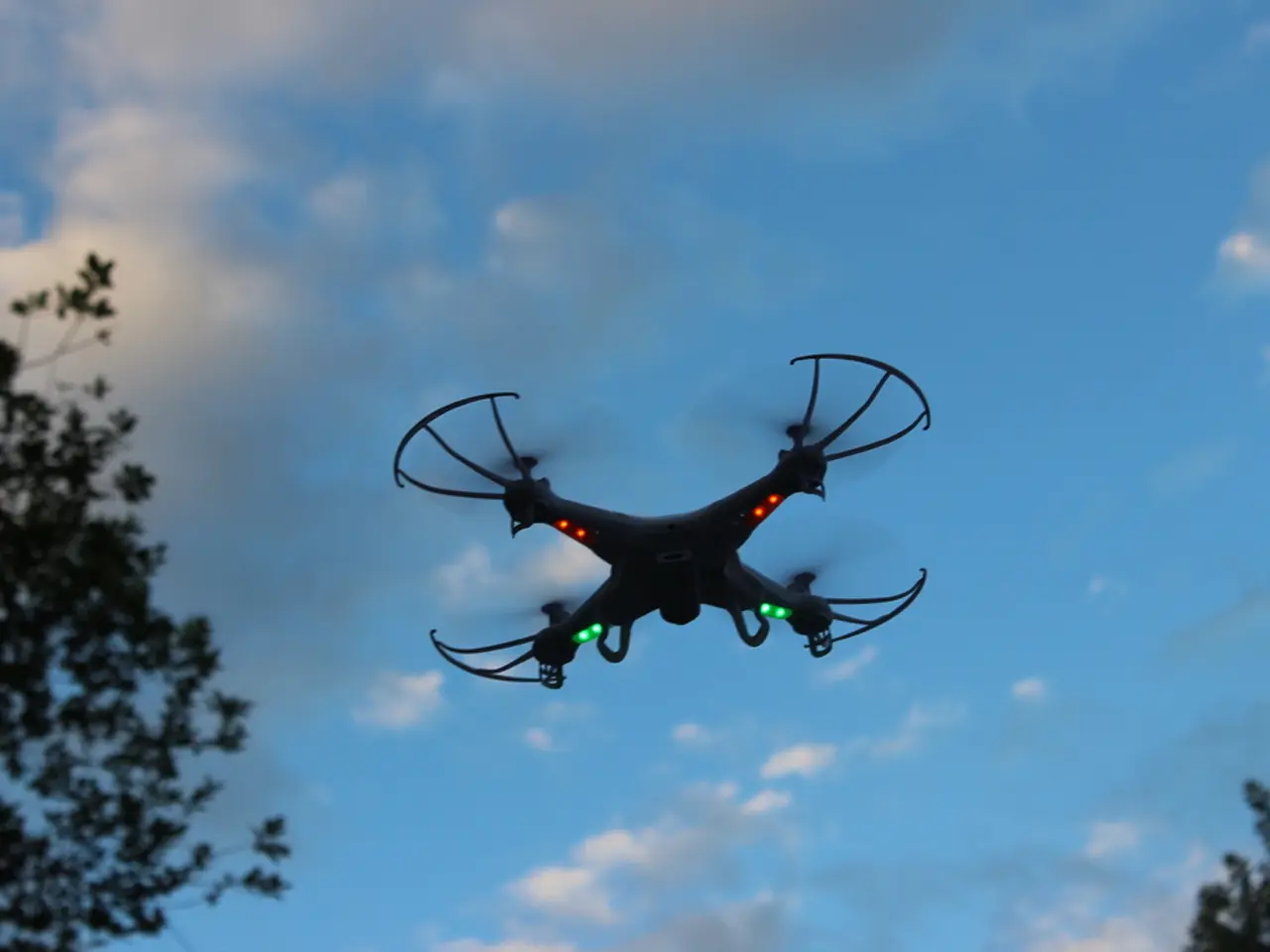Defense Officials Urged to Expedite Small Drone Employment and Address Countermeasures Against Threats
The U.S. military is stepping up its efforts to counter small drone threats, recognising their growing importance as a ubiquitous and evolving menace in contemporary conflicts.
In a significant move, the Defense Department is being encouraged to make "substantial changes" to its policies and priorities to meet the global demand for counter-drone systems. The office is tasked with developing a counter-UAS strategy and working with U.S. Northern Command to roll out new equipment and tactics in the field.
The House legislation orders the Air Force to launch a pilot program with the Federal Aviation Administration (FAA) to detect and identify troublesome drones near domestic military installations. This initiative aims to enhance the military's ability to protect its facilities from small drone threats.
High-level interest in Washington could help the U.S. regain lost ground in an area of asymmetric warfare that has gained popularity and effectiveness. The Republican-led tax-and-spending package provides $1.3 billion to bring on new counter-UAS equipment.
The Army's Coyote counter-UAS system, designed by Raytheon, could be useful for protecting Navy vessels. This system, along with other technological innovations like the Marines’ SMASH 2000L smart scope, is being fielded to help infantry target and shoot down small drones more effectively.
The U.S. Army is leading a new interservice counter-drone task force aimed at coordinating different military branches’ efforts to counter enemy drones rapidly and affordably. This task force, supported by Defense Secretary Pete Hegseth, seeks to unify requirements, acquisition, and deployment processes across services to keep pace with evolving threats.
The Department of Defense is investing heavily in layered counter-UAS strategies that combine electronic warfare tools, advanced missile variants (like enhanced Stingers), and newly emerging systems such as LIDS (Laser Interceptor Defensive Systems). These technologies provide multiple options for addressing small drones beyond prohibitively expensive missile defenses.
Training for troops now increasingly incorporates counter-small drone measures as a core component, recognising that small drones are a ubiquitous threat in contemporary conflicts. The military is expanding training programs and developing decentralised, adaptable force structures optimised for rapid response to drone swarms and other aerial threats.
The Army’s 2026 budget request includes over $800 million for counter-drone initiatives, highlighting the high priority and scale of investment in this area. Marines are also deploying prototype countermeasures with small units to integrate these technologies tactically.
Small drones are expected to be integrated into all relevant combat training ahead of field experiments to prove their worth in real-life conflicts. The House defense policy bill requires the military to buy anti-drone defenses to protect four facilities or assets within a year after the bill becomes law.
The Pentagon is planning to bolster U.S. drone manufacturing and speed up their deployment. The package includes $50 million to accelerate the development of autonomous, one-way attack drones, and $1 billion to grow the industrial base for those systems.
The House defense policy bill includes strong language in favor of deploying offensive small unmanned aerial systems. The Air Force Chief of Staff, Gen. David Allvin, suggested that troops must train differently to defend bases from drones after decades without fear of airborne threats.
Lawmakers in the House and Senate are advocating for the Pentagon to prioritise the threat of cheap, small drones to U.S. forces. The House Armed Services Committee has stated that the Defense Department has not fully used available counter-UAS authorities.
The memo was written by Emil Michael, undersecretary of defense for research and engineering. The July 10 memo allows base-level commanders to decide whether troops can use a certain drone. Ukraine's June 1 attack on Russian military aircraft using small drones caused significant damage to more than three dozen aircraft, demonstrating the potential impact of small drones in warfare.
Overall, the U.S. military views small drones as an immediate and evolving threat that requires a comprehensive approach combining advanced offensive and defensive unmanned aerial systems, interservice coordination, and robust training to maintain battlefield superiority against enemy drone tactics.
- The U.S. military is prioritizing the development of counter-drone strategies, acknowledging small drones as a escalating and adaptable danger in modern warfare.
- Within the Defense Department, there are plans to alter policies and priorities substantially to address the global demand for counter-drone systems.
- The Air Force is mandated to launch a joint program with the Federal Aviation Administration (FAA) to detect and identify problematic drones near domestic military installations.
- High-level interest in Washington could aid the U.S. in reclaiming dominance in an area of asymmetric warfare, where small drones have gained popularity and effectiveness.
- The Army is spearheading an interservice counter-drone task force, aiming to coordinate military branches' efforts to counter enemy drones swiftly and economically.
- The Department of Defense is focusing on layered counter-drone strategies, combining electronic warfare tools, advanced missile variants, and emerging technologies like the Laser Interceptor Defensive Systems.
- The military is investing in deploying small drones for offensive purposes, with the House defense policy bill expressing support for such systems, citing their potential impact in battlefield scenarios.




